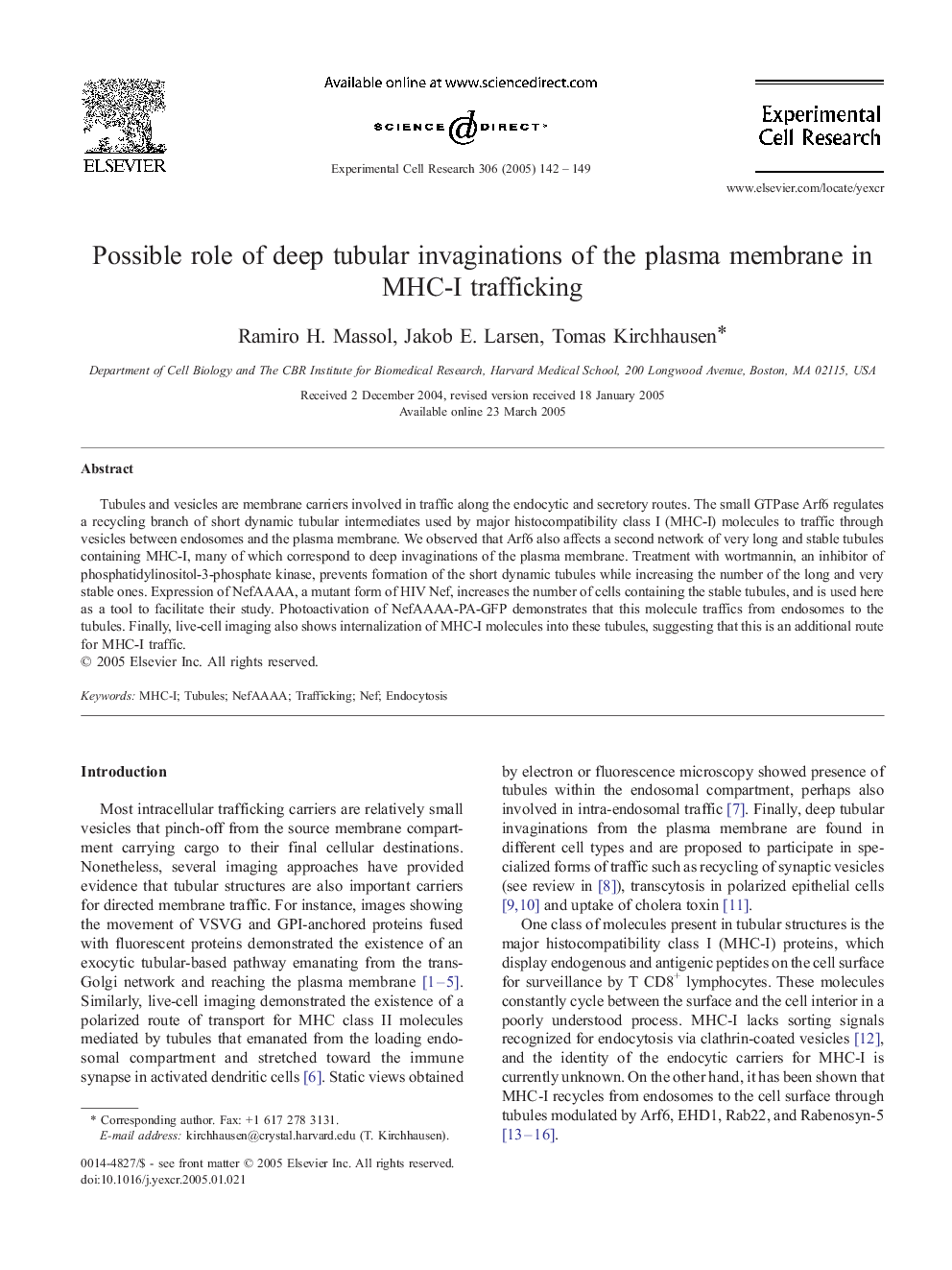| Article ID | Journal | Published Year | Pages | File Type |
|---|---|---|---|---|
| 10904792 | Experimental Cell Research | 2005 | 8 Pages |
Abstract
Tubules and vesicles are membrane carriers involved in traffic along the endocytic and secretory routes. The small GTPase Arf6 regulates a recycling branch of short dynamic tubular intermediates used by major histocompatibility class I (MHC-I) molecules to traffic through vesicles between endosomes and the plasma membrane. We observed that Arf6 also affects a second network of very long and stable tubules containing MHC-I, many of which correspond to deep invaginations of the plasma membrane. Treatment with wortmannin, an inhibitor of phosphatidylinositol-3-phosphate kinase, prevents formation of the short dynamic tubules while increasing the number of the long and very stable ones. Expression of NefAAAA, a mutant form of HIV Nef, increases the number of cells containing the stable tubules, and is used here as a tool to facilitate their study. Photoactivation of NefAAAA-PA-GFP demonstrates that this molecule traffics from endosomes to the tubules. Finally, live-cell imaging also shows internalization of MHC-I molecules into these tubules, suggesting that this is an additional route for MHC-I traffic.
Related Topics
Life Sciences
Biochemistry, Genetics and Molecular Biology
Cancer Research
Authors
Ramiro H. Massol, Jakob E. Larsen, Tomas Kirchhausen,
